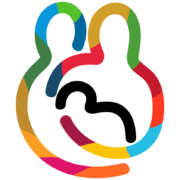Pollutants in breast milk
W. J. Rogan
Arch Pediatr Adolesc Med 150(9):981;1996
OBJECTIVE: To review data on the occurrence and toxicity of the commonly reported pesticides and industrial environmental pollutant chemicals in breast milk. DATA SOURCES: Continuous automated literature surveillance plus contact with investigators and governmental agencies. STUDY SELECTIONS: For data on occurrence, the most recent data from the largest data sets on the most representative donors were used. For data on toxicity, the primary report that was publicly available was used. DATA EXTRACTION: When necessary, data were reexpressed or concentrations were rescaled. The original investigator was contacted if necessary. DATA SYNTHESIS: Although pollutant chemicals are readily detected in most human milk worldwide, there is little evidence for consequent morbidity in nurslings. There have been several mass poisonings in which chemicals that were transmitted through breast milk clearly affected children who were breast-fed, and there is some evidence that prenatal exposure to background levels resulted in mild developmental delay and that lactation per se was disturbed. CONCLUSIONS: Breast-feeding is recommended despite the presence of chemical residues. The prenatal period in the child and the initiation of lactation in the mother may be sensitive periods to the toxicity of the chemicals that are considered here, and the potential for poisoning at higher levels is clear. However, in the vast majority of women, the benefits of breast-feeding appear to outweigh the risks, and those who advise women about infant nutrition should continue to support breast-feeding.
A cikk kivonata az Archives of Pediatrics & Adolescent Medicine oldalán található.


